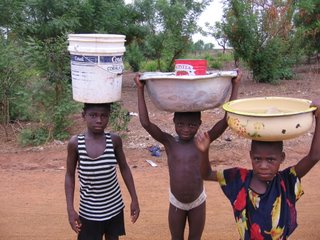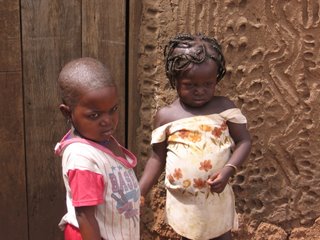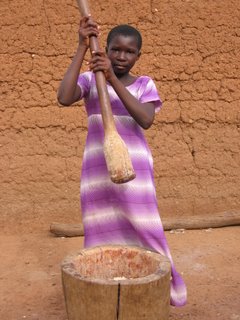Larabanga, April 2-3





To get a taste of rural village life, we spent a night in Larabanga, just outside of Mole NP. We toured a mosque, claimed by the villagers to be the oldest in Ghana, ate TZ (pronounced "tee-zed", maize that is grounded, then boiled), and spent the night on the roof of our guesthouse because of the soaring temperature in our room. In these photos: the Larabanga mosque, some local kids standing by a traditional Muslim calendar wall, a girl pounding fufu (a popular Ghanaian food made of yam and sometimes plantain), and kids carrying water back from the community water source.

0 Comments:
Post a Comment
<< Home